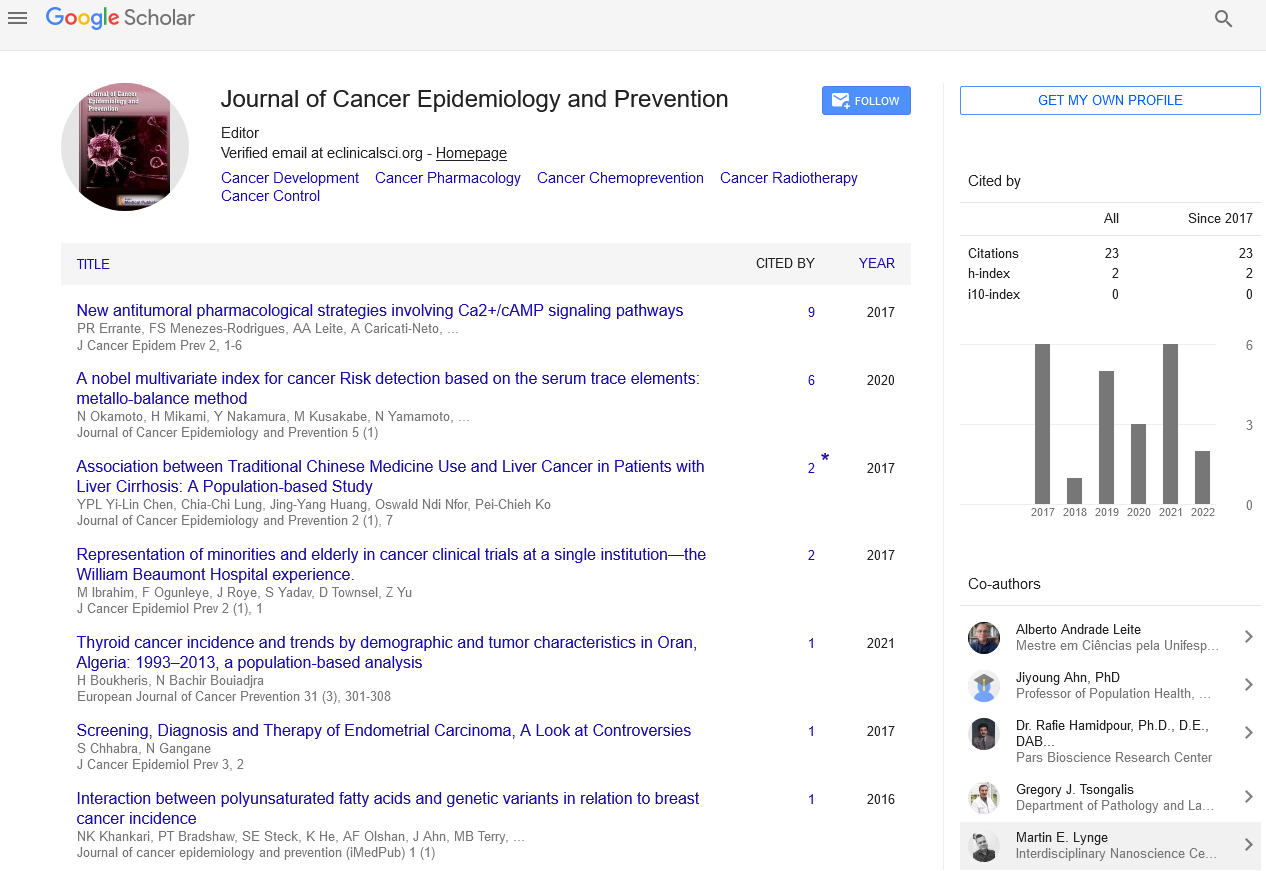Malik SS and Masood N*
Department of Microbiology and Biotechnology Research Lab, Fatima Jinnah Women University, The Mall Rawalpindi, Pakistan
*Corresponding Author:
Nosheen Masood
Department of Environmental Sciences
Microbiology and Biotechnology Research Lab
Fatima Jinnah Women University
The Mall, Rawalpindi, Pakistan
Tel: 92334 5890589
E-mail: nosheenmasood@hotmail.com
Received date: March 14, 2018; Accepted date: March 26, 2018; Published date: March 31, 2018
Citation: Malik SS, Masood N (2018) Prostatic Adenocarcinoma - A Case with Adrenal Gland and Bone Metastasis. J Cancer Epidemiol Prev. Vol. 3 No.1:1.
Copyright: © 2018 Malik SS, et al. This is an open-access article distributed under the terms of the Creative Commons Attribution License, which permits unrestricted use, distribution, and reproduction in any medium, provided the original author and source are credited.
Background
Despite much recent progress, prostate cancer continues to represent a major cause of cancer related morbidity and mortality in men throughout the world. It is the third most common malignancy in Pakistani men [1,2]. At present, there are several major clinical challenges associated with this conventional paradigm for prostate cancer diagnosis and treatment. Each of these significantly impacts the effective management of prostate cancer, and is the subject of investigations in basic research on prostate tumor biology.
Case Presentation
A 68-year-old man presented to the hospital with complaints of fever, burning micturition, hematuria, LUTS (lower urinary tract symptoms) and backache. He was a known case of diabetes, hypertension and ischemic heart disease for which he was taking medication (Loprin, Lipirex, Concor, Diagesic and Glucophage) regularly. He was non-smoker but naswar addict. There was a history of TURP (Transurethral resection of the prostate), 2 years back after which he also noticed that he started losing weight. He was diagnosed as a case of UTI (urinary tract infections) and treated accordingly. After the treatment symptoms of fever and burning micturition settled but the complaint of painless hematuria remained as such.
Laboratory Investigations
Laboratory Investigations showed following picture of case: Haemoglobin level 11 g/dL, haematocrit 37.2%, Wbcs 4700 μ/L, platelet count 18,000 and creatinine was 1.27 mg/dL. PSA was 1300 ng/dL at diagnosis and then lowered down to 41 ng/mL with initial treatment. Prostatic biopsy showed adenocarcinoma with Gleason score 8 (4+4). There was no family history of prostate carcinoma. Patient’s maternal uncles had history of bladder cancer.
Ultrasound report showed enlarged prostate, thickened urinary bladder wall, significant post void residual volume and fullness of right pelvicalyced system. CAT scan represented extensive bone metastasis, indeterminate lung and adrenal gland nodules. CT chest showed extensive sclerotic metastasis, damaged lung nodules, adrenal glands and lateral limb. Bone scan represented extensive bone metastasis, skeletal metastasis involving ribs, joints and sternum. MRI showed extensive metastasis, leptomeningeal spread of disease, multilevel degenerative discogenic disease results in central canal stenosis, bilateral recers and foraminal narrowing. Urine culture showed no growth after 48 hours of incubation but urine cytology presented E. coli.
Treatment
His treatment was planned with the cycles of radiotherapy, he underwent 35 cycles and follow up investigations was done accordingly. PSA was 41 ng/mL then 16 ng/mL and after 35 cycles it was 4.2 ng/mL. Patient was taking Zometa injection and Casodex.
Discussion
Prostate cancer is the most commonly diagnosed cancer in men worldwide [2,3]. Cancer can metastasize to any part of the body but prostate cancer is particularly associated with pulmonary and skeletal metastasis. It locally invades bladder, seminal vessels, regional lymph node and rectum [4]. Diverse progression has been observed in metastatic sites of cancer. It may result in increased average age or better life expectancy of cancer patients with advanced treatment options. Atypical metastatic locations include brain, ocular region, testes, skin, parotid and mammary glands, lymphatic system and respiratory tract. It has increased propensity to metastasize bone because endothelial cells in bone marrow have higher affinity to bind with prostate tumor cells [5,6].
Prostate cancer frequently spreads through lymphatic system encompassing left supraclavicular lymph node and haematogenous embolisation to the lungs. Following pathway is followed: external iliac chain, para-aotic lymph nodes, thoracic duct and finally to supraclavicular node [7,8].
Adrenal metastasis was found only in 17-20% prostate cancer patients reported from autopsy cases [9]. In addition to current case report only few case studies were reported with bones, lungs, skeletal and central canal stenosis in a single patient.
Conclusion
Prostate cancer is thought to be an old age disease and is always surprising for clinician and urologists by its diverse manifestations. Therefore, any patient presenting with urinary complications (particularly aged ones) must undergo PSA and DRE. Although adrenal metastasis is rare, clinicians must be aware of it for early diagnosis and management of the disease.
References
- Malik SS, Masood N, Yasmin A (2015) Prostate cancer and glutathione S-transferase deletions. EXCLI Journal 14: 1049-1054.
- Siegel RL, Miller KD, Jemal A (2018) Cancer statistics, 2018. CA: Cancer J Clin 68: 7-30.
- Malik SS, Batool R, Masood N, Yasmin A (2018) Risk factors for prostate cancer: A multi-factorial case control study. Curr Probl Cancer.
- Khan F, Mahmalji W, Sriprasad S, Madaan S (2013) Prostate cancer with metastases to the kidney: a rare manifestation of a common disease. BMJ Case Rep 2013: bcr2012008388.
- Jin JK, Dayyani F, Gallick GE (2011) Steps in prostate cancer progression that lead to bone metastasis. Int J Cancer 128: 2545-2561.
- Lefresne S, Fairchild A, Johnson R, Deschenes J, Russell L, et al. (2012) Genitourinary malignancy presenting as an ocular metastasis: A case report and review of the literature. Can Urol Assoc J 6: E67.
- Lin YY, Lin DS, Kang BH, Lin YS (2011) Neck mass as the first presentation of metastatic prostatic adenocarcinoma. J Chin Med Assoc 74: 570-573.
- Bhattar R, Maheshwari A, Yadav SS, Tomar V (2017) Unusual presentation of prostate carcinoma: a case report. J Clin Diagn Res: JCDR 11: PD06.
- Kawahara T, Taguchi H, Yamagishi T, Udagawa K, Ouchi H, et al. (2009) A case of bilateral adrenal and pleural metastases from prostate cancer. Case Rep Oncol 2: 217-219.

